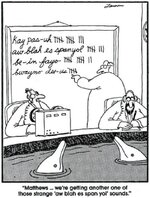lpetrich
Contributor
The authors found that gender and noun classes were most likely inherited and that classifiers were most likely diffused, agreeing with previous results.
Finally, language speakers tend to stay in similar environments when they migrate (Nichols, 1992; Gray and Jordan, 2000; Ramat, 2012; Hock and Jospeh, 2019); therefore, if gender and noun class languages spread more by language expansion, we expect to find less variance within the natural environment surrounding their location. If classifiers spread more by feature diffusion, the spread is expected to be more independent of environmental factors.
...
The exact time of the spreads is unknown for most of our families, but given their reconstructed age range of 4000–8000 years (Nichols, 2008; Greenhill et al., 2017), the spreads most likely occurred during the mid-Holocene period. Therefore, we use mid-Holocene projections for the selected environmental factors (Derungs et al., 2018), which are shown in Fig. 3. The results are consistent with our hypothesis, as for each of the three environmental factors, classifier languages have the largest variance, followed by gender languages, and then by noun class languages (as shown by Quantile dispersion, Levene tests, and Conover tests.


